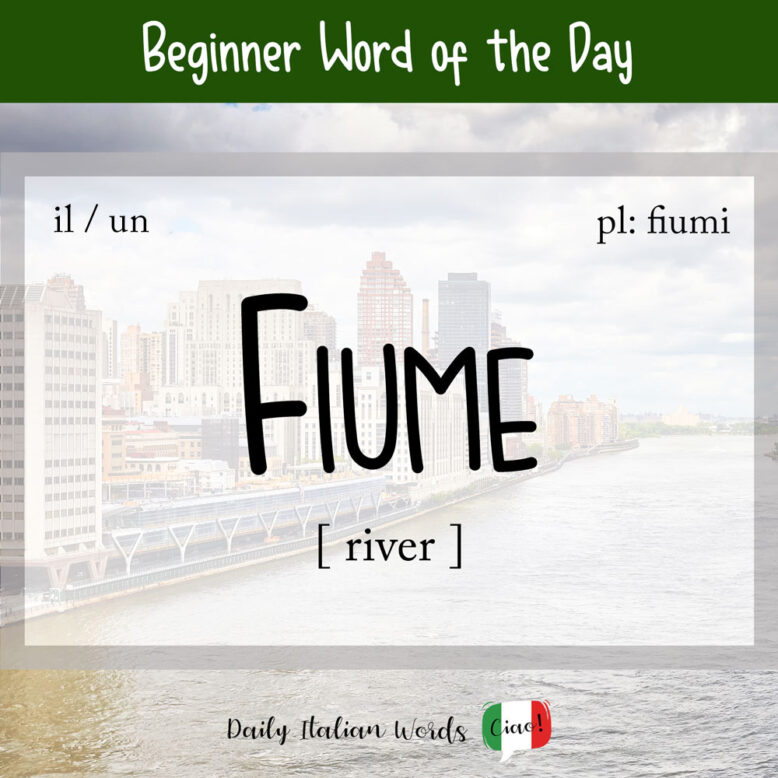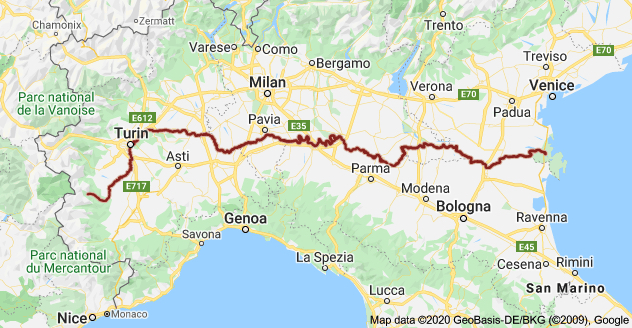If you are already familiar with the English word fluvial, you will have no trouble whatsoever remembering the Italian word for river which is fiume (masculine, plural: fiumi).

The longest river in Italy, il Fiume Po, runs through the city of Turin where my husband was born. It flows 405 miles from its source near the border with France all the way to the Adriatic coast on the other side of the country.

Il Po è il fiume più lungo d’Italia.
The Po is the longest river in Italy.
In Italian, there are two other kinds of natural streams of flowing water: the ruscello and torrente. The former is a small stream that flows into a larger stream, originating from a spring out of the ground or the foot of a glacier. The latter is a sloping stream that, in addition to being dependent on flood water, can remain completely dry during periods of drought.
Fiume can be used in a figurative sense to refer to a large number of people or things, often in movement.
Un fiume di gente ha invaso la piazza ieri sera.
A flood of people swarmed the square last night.
La pagina Facebook del politico è stata inondata da un fiume di insulti.
The politician’s Facebook page was flooded with insults.
It can also function as an adjective to describe a long, drawn-out process.
Mamma mia, non uscirò mai vivo da questa riunione fiume!
Oh boy, there’s no way I’m going to escape from this never-ending meeting alive!
Heather Broster is a graduate with honours in linguistics from the University of Western Ontario. She is an aspiring polyglot, proficient in English and Italian, as well as Japanese, Welsh, and French to varying degrees of fluency. Originally from Toronto, Heather has resided in various countries, notably Italy for a period of six years. Her primary focus lies in the fields of language acquisition, education, and bilingual instruction.


